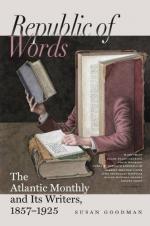Before the year 1800, men had never suspected that their home had been tenanted in past times by a set of beings totally different from those that inhabit it now; still farther was it from their thought to imagine that creation after creation had followed each other in successive ages, every one stamped with a character peculiarly its own. It was Cuvier who, aroused to new labors by the hint he received from the bones unearthed at Montmartre, to which all his vast knowledge of living animals gave him no clue, established by means of most laborious investigations the astounding conclusion, that, prior to the existence of the animals and plants now living, this globe had been the theatre of another set of beings, every trace of whom had vanished from the face of the earth. To his alert and active intellect and powerful imagination a word spoken out of the past was pregnant with meaning; and when he had once convinced himself that he had found a single animal that had no counterpart among living beings, it gave him the key to many mysteries.
It may be doubted whether men’s eyes are ever opened to truths which, though new to them, are old to God, till the time has come when they can apprehend their meaning and turn them to good account. It certainly seems, that, when such a revelation has once been made, light pours in upon it from every side; and this is especially true of the case in point. The existence of a past creation once suggested, confirmation was found in a thousand facts overlooked before. The solid crust of the earth gave up its dead, and from the snows of Siberia, from the soil of Italy, from caves of Central Europe, from mines, from the rent sides of mountains and from their highest peaks, from the coral beds of ancient oceans, the varied animals that had possessed the earth ages before man was created spoke to us of the past.
No sooner were these facts established, than the relation between the extinct world and the world of to-day became the subject of extensive researches and comparisons; innumerable theories were started to account for the differences, and to determine the periods and manner of the change. It is not my intention to enter now at any length upon the subject of geological succession, though I hope to return to it hereafter in a series of papers upon that and kindred topics; but I allude to it here, before presenting some views upon the maintenance of organic types as they exist in our own period, for the following reason. Since it has been shown that from the beginning of Creation till the present time the physical history of the world has been divided into a succession of distinct periods, each one accompanied by its characteristic animals and plants, so that our own epoch is only the closing one in the long procession of the ages, naturalists have been constantly striving to find the connecting link between them all, and to prove that each such creation has been a normal and natural growth out of the preceding one.




